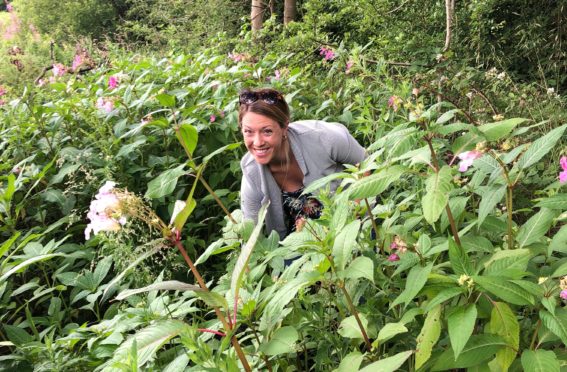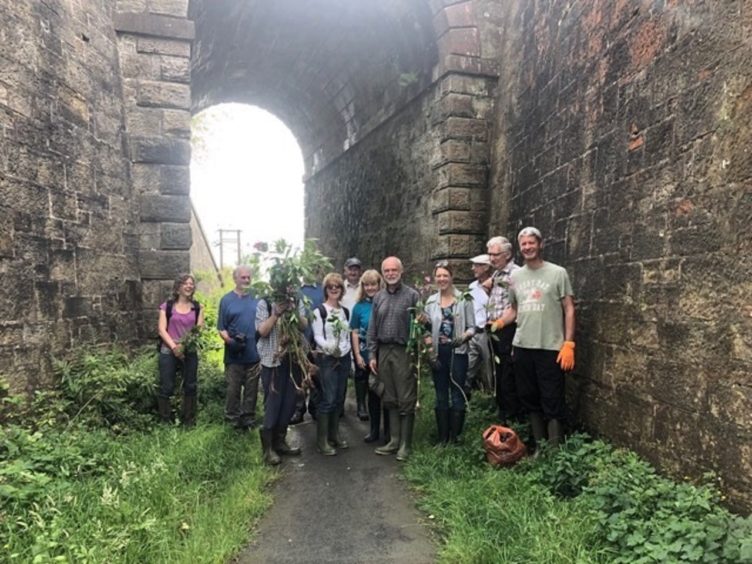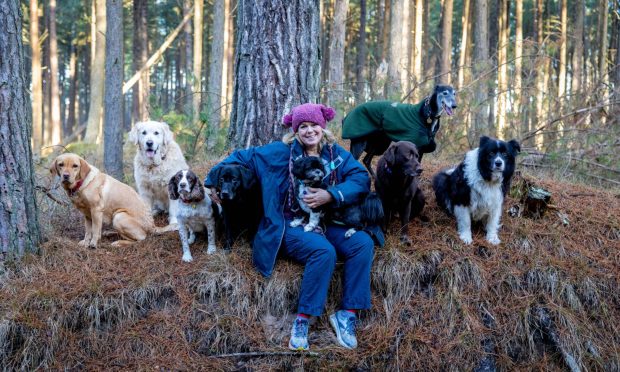Environmental groups are waging war on a non-native invasive plant which is causing chaos in towns and the countryside.
Himalayan balsam, which has the botanical name, Impatiens glandulifera, is a relative of the Busy Lizzie but can grow well over head height and is considered a major weed problem, especially on riverbanks and wasteland.
The tall, pink-flowered weed, which is also known as jumping jack or policemen’s helmet, has spread rapidly through parts of central Fife, especially from the Back Burn to Markinch. As a result, it has had a devastating effect on local biodiversity and native plant species.
The weed is particularly prevalent on either side of the path by the railway bridge at Markinch, which forms part of the popular Fife Pilgrim’s Way.
Local SNP MSP Jenny Gilruth has joined members of the Markinch Heritage Group and volunteers from the Fife Coast and Countryside Trust for a morning of pulling up the problematic plants.
Ms Gilruth was shocked to see the extent on the problem and wants awareness of Himalayan balsam.
“I am incredibly impressed by the work of both the Markinch Heritage Group and the Fife Coast and Countryside Trust and their commitment to maintaining the Fife area,” she said.
“Groups like this that take the initiative to come out into the local area and give back are the bread and butter of community spirit and I was delighted to be able to join them in their quest to tackle the Himalayan balsam problem.
“I wish the group the best of luck with their quest, and I know I will always be on the lookout for balsam now that I have more information on the negative impact it has on local vegetation.”
Deirdre Munro, a countryside ranger for the Fife Coast and Countryside Trust, said the fight against the invasive species will be ongoing over the coming months.
“Himalayan balsam comes from the Himalayas and was introduced to this country as a beautiful garden plant,” she explained.
“However, this has now colonised areas and out competes with our own natural indigenous plants.
“The efforts of the volunteer groups are very valuable and helps to manage the bio-diversity of our countryside.”
The plant, which can also be found in gardens, tolerates low light levels and shades out other vegetation, effectively destroying habitats by killing off other plants.
Each plant can produce up to 800 seeds and can either be transported by human means or further afield by watercourses.











